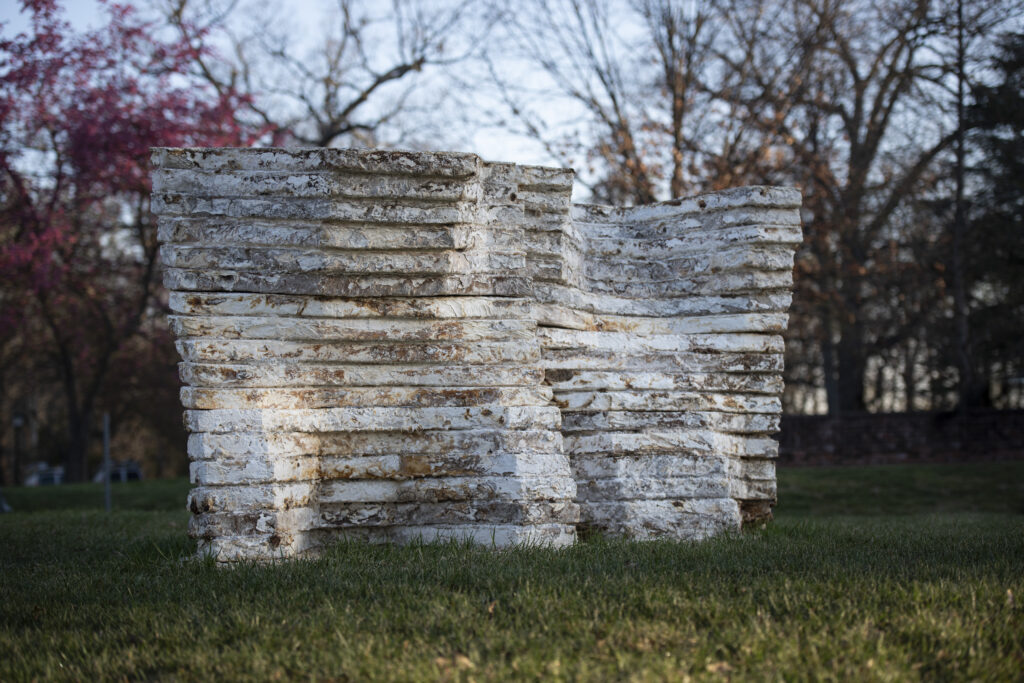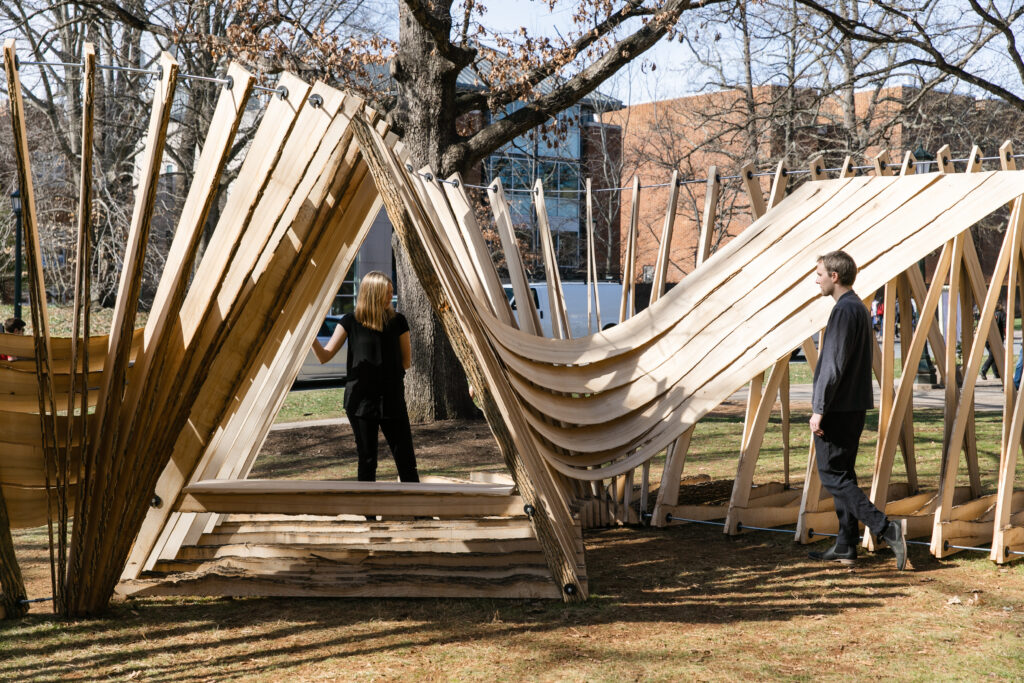Five temporary pavilions have been constructed at the University of Virginia that uniquely address how design and function can respond to contemporary needs. They’re part of the Biomaterials Building Exposition, curated by Katie MacDonald, AIA, and Kyle Schumann, principals of After Architecture and instructors at the University of Virginia’s School of Architecture. They’re also part of an important global research effort to decarbonize design and construction with the use of rapidly renewable materials, which many experts see as advantageous to reducing embodied carbon and reducing the costs associated with climate positive design.

Jefferson designed the 1817 Academical Village plan as a living Palladian textbook for its first classes of students and a decentralized gambit against infectious disease after witnessing the 1787 competition for a new Hôtel-Dieu outside Paris, which failed to produce a new hospital, but reoriented how we think about salubrity. In a January 1800 letter to Joseph Priestly, the Philadelphia polymath who discovered oxygen a generation earlier, Jefferson imagined a “university on a plan so broad & liberal & modern.” Exactly 25 years and two months later, the school opened its doors while the plaster on the Rotunda was barely dry, having first completed the pavilions that make the Academical Village as an experiment in urban density as much an Enlightenment ambition for an educated polity.
Today, the variety of needs that contemporary architecture must address is arguably greater or lesser than it was in 1825, but inarguably more urgent in the effort to decarbonize design and construction. Materials and products are a significant factor in how effectively we can shrink the footprint of embodied carbon. Our global addiction to concrete, glass, and steel is economic and aesthetic for materials that represent egregious industrial processes, transportation requirements, and embodied carbon loads.
But, what if we designed and built with materials that are easily grown, organic, and strong (or made stronger with a little help)?
That’s the key question that the Biomaterials Building Exposition seeks to answer in its five pavilions that are, for lack of a better term, Jeffersonian in their shared sense of purpose.
The spiderlike legs anchored to the grass in the shadow of Campbell Hall, and developed by Penn State architecture professor Benay Gürsoy Toykoç, are actually mycelium blocks—structural fungi stronger than concrete. Another mycelium block installation by Kansas State University assistant professor Jonathan Dessi-Olive flexes its strength through two torqued volumes that are as sculptural as they are suggestive of a broken serpentine wall that might be at home on Grounds. Wood defines the other three projects in the exposition, from the rigid cubo-matrix of Somewhere Studio towering over a glade; to untreated, raw logs transformed through kerfing into an undulating structure by Cornell’s HANNAH Office; to the milled pine, oak, and black locust pieces framed to optimize fungal growth on site (rather than block it) by Rice University’s Liz Gálvez.

While it’s a short-lived exposition at UVa, running through the end of April, it began spirit two years ago at the Knoxville Museum of Art, which hosted a prototype called “Homegrown” and designed by co-curators MacDonald and Schumann—a small room whose walls were constructed of unwanted invasive plants and yard waste. The duo, who teach at UVa’s School of Architecture, devised the structure, the construction method, and the machine to make the forms of Homegrown, which was as much about doing something productive with unlikely materials as it was about helping visitors see their responsibility to a lifecycle beyond congratulating themselves for merely appreciating a sustainable product.
“In terms of productive versus unproductive space,” Schumann told Inform Magazine last fall, “[Homegrown] addresses material streams. Relative to the spaces we’re creating, we see this as a prototype and a proof of concept for the public.”
If the bait of Homegrown was an improbable space made of waste, then the hook was the lifecycle that sparks necessary conversations about scale, cost, supply, demand, and what’s possible for architecture’s future. Following suit, the Biomaterial Building Exposition begins to map out that future just as, 200 years ago, nine nearby pavilions mapped out what was possible for a university on a plan “so…modern.”
The Biomaterials Building Exposition runs through April 30. Learn more at https://www.biomaterialbuilding.com.
About the Author
William Richards is a writer based in Washington, DC, and co-founder of Team Three, an editorial and creative consultancy. His latest book, Bamboo Contemporary, published by Princeton Architectural Press, is out this month.
